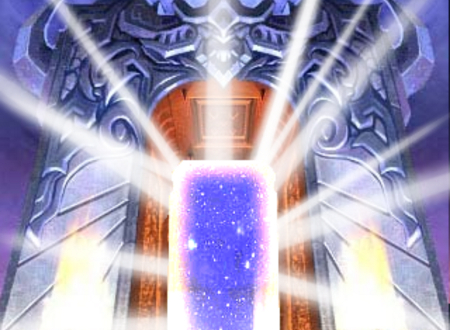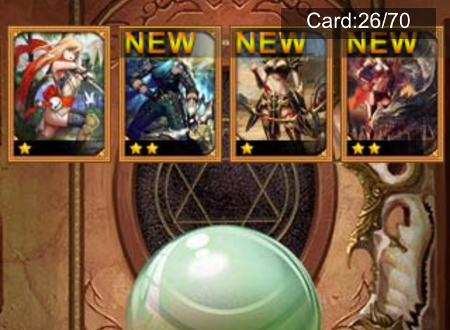How to start strong and stay strong in Dragon Summoner - hints, tips, and tricks
Build a rock-solid deck in next to no time

Like a lot of freemium card battlers, Dragon Summoner is a daunting experience the first time you boot up the game.
Sure, there's a tutorial, but it throws so many ideas and terms at you in quick succession that it all becomes incredibly confusing.
So, if you fancy getting into GREE and Gameloft's latest card-battling game, you'll be in need of a starter's guide.
You've come to the right place, then!
In this guide, I will tell you everything you need to know to make a flying start in Dragon Summoner, give you tips on getting the very most from your time with the game, and more.
Rare specimens

Let's start with the basics.
You'll see a lot of numbers as you make your way through the early part of Dragon Summoner, including adverts for rare cards with huge numbers that will have very little meaning to a new player.
Don't worry about any of this for the time being. You'll begin to slowly grasp the raw mathematics that govern this game in mid- to high-tier play levels. What you need to concern yourself with at the beginning is building a large roster of cards for your deck.
You're immediately presented with a tutorial that should get you comfortable with the mechanics. Though you'll learn the flow of play, however, it's doubtful you'll pick up much more from this barrage of info.
Don't be tempted to skip it, mind: by finishing the tutorial, you are rewarded with an SR Card.
Cards are divided into rarity. As a rule of thumb, the more rare the card, the more useful that card will be in your deck. In ascending order of rarity, cards are divided into the following categories: N, UN, R, SR, and UR.
Oh, and there are well over 200 cards to collect.
Gotcha
To obtain all of these cards, you'll need to invest a massive chunk of time into several elements of the game.
First up: the PvE Quests. These are where you'll spend the majority of your time.
Cards are awarded intermittently through the Quests. To get all of the available cards in a Chapter, you'll need to repeat them. A lot. This isn't too much of a pain if you don't mind grind, as you'll also gain experience, currency, and additional Friendship Points.
Friendship Points (or FP) are used on the Friendship Gacha, which is analogous to the Gashapon toy dispensers (albeit with a more magical edge). You can also gain FP by interacting with friends and defeating Raid Bosses.
There are many forms of Gacha, and they are divided into Friendship, Bronze, Silver, Gold, and Platinum. The rarity of cards you'll receive from them is again tiered, with Platinum Gacha offering the best chances for the more rare cards.
You'll get tickets for the Bronze to Gold Gacha by continuing through the game, but Platinum ones will cost you Dragon Coin, the game's premium currency.
If you're serious about Dragon Summoner, then you'll need to play every single day to maximise your chances of filling out your deck. You're given a bonus for each day you log in, and the rewards are often massive, with free FP, Gold, and Gacha tickets up for grabs.
Enhancing, Evolving
With a strong deck of cards at your fingertips, it's time to maximise their efficiency. Tap the 'Fusion' option on a menu screen, and you'll be whisked away to a space where you can Enhance and Evolve your deck.
Enhancing a card is making a Base Card statistically more powerful by sacrificing a Material Card. Material Cards are other character cards, so you'll only want to use cards you know you can get more of easily. That's because once you've used them, they're discarded.
Using one or more Material Card, you can dramatically increase the AT, DF, and HP of the Base Card, making it more effective in battle.
Evolving is a process whereby you take two of the same card to create a new, much rarer card. Again, though, you lose one card in the process. To make the most of this, keep sacrificing low-end cards to the cards you use most to create all-powerful super-cards.
Be aware, though, that the better the card, the more Leadership you'll need to wield it in a Formation. You receive Leadership points for progressing through the game - the more you have, the better and more numerous the cards you can use (up to a maximum of six).
Now that you have some awesome cards, you might be tempted to wander into some PvP Battles. Personally, I'd steer clear of them... unless you want items stolen from you. In fact, steer clear of that area of the game until you know you've got an unbeatable deck.
If you are going to take part in these PvP Battles, though, make sure you keep in mind that there's a Pokemon-esque element system in play that, while not massively important at low levels, can make all the difference in top-tier play.
There are three types of card: Warrior, Mage, and Hunter. Warriors are given a bonus to their attack power through fighting Mages, Mages are more powerful against Hunters, and (you guessed it) Hunters are effective against Warriors.
That's it! That should see you through the early and mid-stages of the game. Have you got any more tips to share? Let us and the rest of the PG community know them by leaving your tips in the comments section below.